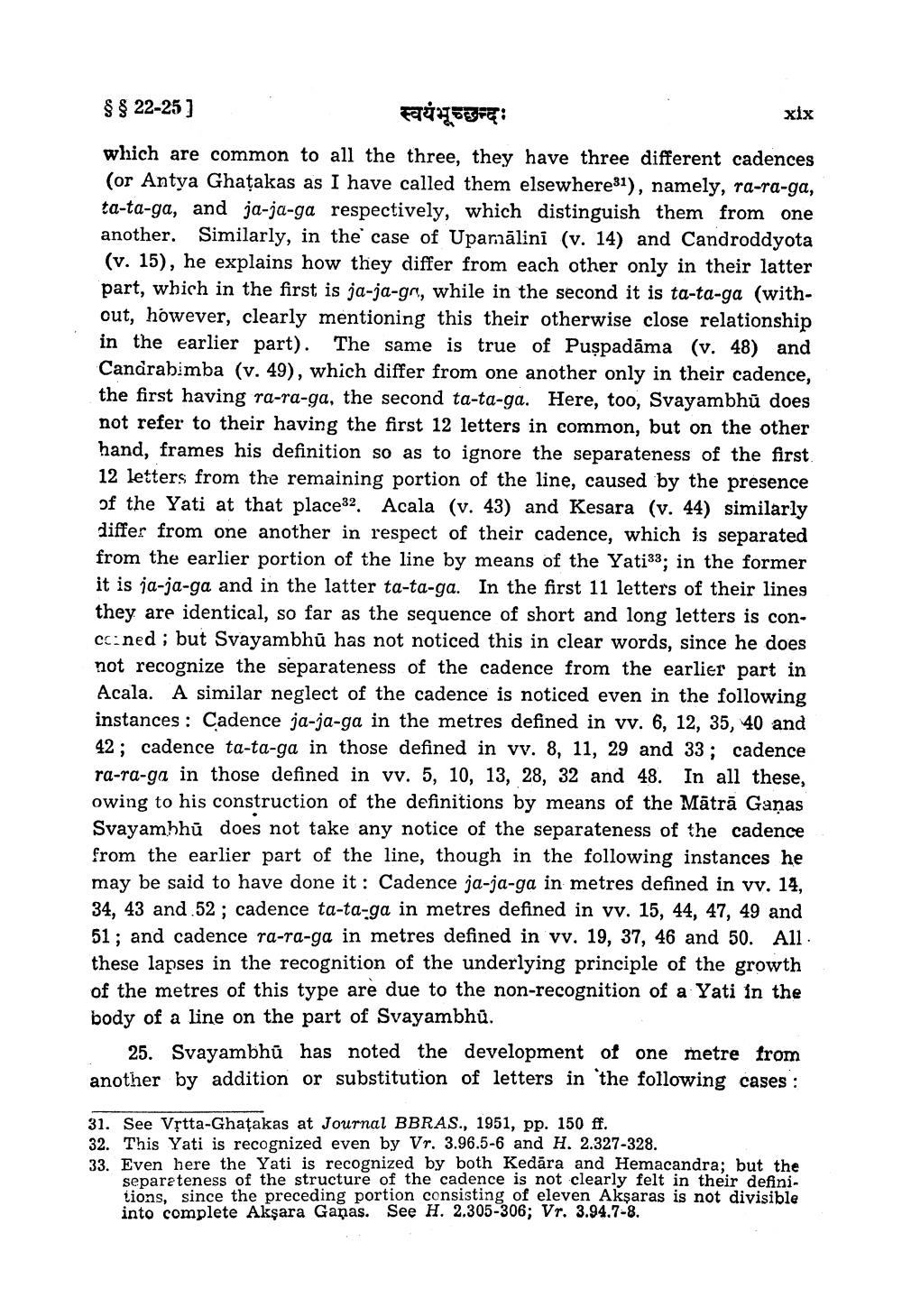________________
$ $ 22-25)
स्वयंभूच्छन्दः
xix
which are common to all the three, they have three different cadences (or Antya Ghatakas as I have called them elsewhere31), namely, ra-ra-ga, ta-ta-ga, and ja-ja-ga respectively, which distinguish them from one another. Similarly, in the case of Upamālini (v. 14) and Candroddyota (v. 15), he explains how they differ from each other only in their latter part, which in the first is ja-ja-gr, while in the second it is ta-ta-ga (without, however, clearly mentioning this their otherwise close relationship in the earlier part). The same is true of Puspadāma (v. 48) and Candrabimba (v. 49), which differ from one another only in their cadence, the first having ra-ra-ga, the second ta-ta-ga. Here, too, Svayambhū does not refer to their having the first 12 letters in common, but on the other hand, frames his definition so as to ignore the separateness of the first 12 letters from the remaining portion of the line, caused by the presence of the Yati at that place32. Acala (v. 43) and Kesara (v. 44) similarly differ from one another in respect of their cadence, which is separated from the earlier portion of the line by means of the Yati33; in the former it is ja-ja-ga and in the latter ta-ta-ga. In the first 11 letters of their lines they are identical, so far as the sequence of short and long letters is concc:ned; but Svayambhū has not noticed this in clear words, since he does not recognize the separateness of the cadence from the earlier part in Acala. A similar neglect of the cadence is noticed even in the following instances : Cadence ja-ja-ga in the metres defined in vy. 6, 12, 35, 40 and 42; cadence ta-ta-ga in those defined in vv. 8, 11, 29 and 33 ; cadence ra-ra-ga in those defined in vv. 5, 10, 13, 28, 32 and 48. In all these, owing to his construction of the definitions by means of the Mātrā Ganas Svayambhū does not take any notice of the separateness of the cadence from the earlier part of the line, though in the following instances he may be said to have done it: Cadence ja-ja-ga in metres defined in vv. 14, 34, 43 and 52; cadence ta-ta-ga in metres defined in vv. 15, 44, 47, 49 and 51; and cadence ra-ra-ga in metres defined in vv. 19, 37, 46 and 50. All these lapses in the recognition of the underlying principle of the growth of the metres of this type are due to the non-recognition of a Yati in the body of a line on the part of Svayambhu.
25. Svayambhū has noted the development of one metre from another by addition or substitution of letters in the following cases :
31. See Vrtta-Ghatakas at Journal BBRAS., 1951, pp. 150 ff. 32. This Yati is recognized even by Vr. 3.96.5-6 and H. 2.327-328. 33. Even here the Yati is recognized by both Kedāra and Hemacandra; but the
separateness of the structure of the cadence is not clearly felt in their defini. jions, since the preceding portion consisting of eleven Aksaras is not divisible into complete Aksara Ganas. See H. 2.305-306; Vr. 3.94.7-8.




